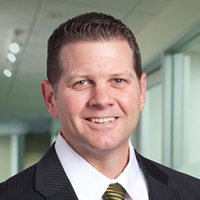Financial Fixes to Make after the Pandemic
Now is a good time to reflect on what the COVID-19 pandemic has done to your finances (and surprise, there may be some good news here) and to your priorities themselves. After giving it some thought, here’s what you should do going forward.


From dining out to vacation travel, many Americans have started to resume their pre-pandemic lifestyles – and the spending that accompanies those lifestyles. According to Schwab’s Modern Wealth Survey, nearly half (47%) of Americans polled back in February (before the rise of the Delta variant) were looking to get back to living and spending like they were before the COVID-19 pandemic and a quarter (24%) said they were eager to indulge to make up for lost time.
But we’re also seeing a healthy balance – even as people make plans to get out and spend, they also want to nurture newfound savings and investing habits developed over the last year. Nearly two-thirds (64%) of Americans surveyed said they were savers in 2020, as opposed to spenders. Hoping to double down on new savings habits in post-COVID life, 80% planned to be bigger savers than spenders in the year ahead, with nearly half (45%) planning to save more money and a third (34%) intending to reduce their debt once the pandemic has subsided.
If your own spending and savings outlook has shifted during the pandemic, how can you make sure you will stay on a healthy financial path going forward? Start by taking these steps:
From just $107.88 $24.99 for Kiplinger Personal Finance
Become a smarter, better informed investor. Subscribe from just $107.88 $24.99, plus get up to 4 Special Issues

Sign up for Kiplinger’s Free Newsletters
Profit and prosper with the best of expert advice on investing, taxes, retirement, personal finance and more - straight to your e-mail.
Profit and prosper with the best of expert advice - straight to your e-mail.
Revisit your goals
To determine how to fit new priorities into your financial plan, start by identifying what is most important to you. Not all goals are created equal, so make a list of the top three things you’d like to do over the next year or so, along with your top three longer-term goals. Then, commit to saving toward each while resisting the urge to splurge on other things that may be less important to you.
As you revisit your goals, you may find that your priorities have changed over the last year. Many people are finding that they have different feelings about what matters to them most, with increased importance on mental health (69%) and the health of their relationships (57%).
Assess your preparedness for the unexpected
Schwab’s survey revealed that over half of Americans were financially impacted by the pandemic. Against this backdrop, it’s important to assess your financial preparedness for the unexpected. As you plan for the future, consider building emergency savings and contributing to a health savings account, if you’re eligible for one.
You may also want to ensure that you have adequate insurance coverage. Sound insurance planning can help avoid a financial catastrophe. Health insurance is a must, and it’s also wise to confirm that you have adequate automobile and homeowners insurance. Explore disability, life and long-term care insurance and consider whether adding coverage is right for you.
Put your plan in writing
After a year of focusing on one day at a time, we’re now able to look ahead and plan for tomorrow. Take this as an opportunity to review where you are — and be honest with yourself about your progress toward your goals.
Simply writing things down is an important step. In fact, 54% of Americans who have a written financial plan feel “very confident” about reaching their financial goals, while only 18% of those without a plan feel the same level of certainty. However, only a third (33%) of Americans have a plan in writing, despite planning tools and advice being more accessible than ever.
Whether you need to reduce spending and debt, up your savings or just refine the details, once you know where you are and where you need to go, you’ll have a sense of direction. Then you can take necessary action steps and commit to moving forward.
Investing involves risk including loss of principal. Diversification strategies do not ensure a profit and do not protect against losses in declining markets.
The information here is for general informational purposes only and should not be considered an individualized recommendation or personalized investment advice. The type of securities and investment strategies mentioned may not be suitable for everyone. Each investor needs to review an investment strategy for his or her own particular situation before making any investment decision.
©2021 Charles Schwab & Co., Inc. (“Schwab”). All rights reserved. Member SIPC.
Profit and prosper with the best of Kiplinger's advice on investing, taxes, retirement, personal finance and much more. Delivered daily. Enter your email in the box and click Sign Me Up.

Joe Vietri has been with Charles Schwab for more than 25 years. In his current role, he leads Schwab's branch network, managing more than 2,000 employees in more than 300 branches throughout the country.
-
 What to Do If You Plan to Make Catch-Up Contributions in 2026
What to Do If You Plan to Make Catch-Up Contributions in 2026Under new rules, you may lose an up-front deduction but gain tax-free income once you retire.
-
 If You'd Put $1,000 Into Lowe's Stock 20 Years Ago, Here's What You'd Have Today
If You'd Put $1,000 Into Lowe's Stock 20 Years Ago, Here's What You'd Have TodayLowe's stock has delivered disappointing returns recently, but it's been a great holding for truly patient investors.
-
 How to Max Out Your 401(k) in 2026 (New Limits are Higher)
How to Max Out Your 401(k) in 2026 (New Limits are Higher)In 2026, the maximum contribution limits for 401(k) plans have increased, giving you an excellent shot at maximizing your retirement savings.
-
 8 Practical Ways to Declutter Your Life in 2026: A Retirement 'Non-Resolution' Checklist
8 Practical Ways to Declutter Your Life in 2026: A Retirement 'Non-Resolution' ChecklistHere's how to stop wasting your energy on things that don't enhance your new chapter and focus on the things that do.
-
 To Retire Rich, Stop Chasing Huge Returns and Do This Instead, Courtesy of a Financial Planner
To Retire Rich, Stop Chasing Huge Returns and Do This Instead, Courtesy of a Financial PlannerSaving a large percentage of your income, minimizing taxes and keeping spending in check can offer a more realistic path to retiring rich.
-
 New Year, New Retirement Rules: Here's How You Can Keep Up as the Landscape Changes
New Year, New Retirement Rules: Here's How You Can Keep Up as the Landscape ChangesFor a successful modern retirement, prepare for a longer life, manage high health care costs and prioritize your social life and purpose.
-
 7 Creative Ways to Spend Less and Save More In Retirement, Courtesy of a Financial Pro
7 Creative Ways to Spend Less and Save More In Retirement, Courtesy of a Financial ProWorried you won't have enough money later in life? Try redesigning your vision of retirement, and you may find your savings go further than you thought.
-
 I'm an Annuities Pro: This Is How You Can Cover the Income Gap While Your Social Security Benefits Grow
I'm an Annuities Pro: This Is How You Can Cover the Income Gap While Your Social Security Benefits GrowTaking Social Security later results in higher future income, but that can create an income gap. Annuities can boost income until you file for benefits.
-
 I'm a Financial Pro: You Really Can Make New Year's Money Resolutions That Stick (and Just Smile as Quitter's Day Goes By)
I'm a Financial Pro: You Really Can Make New Year's Money Resolutions That Stick (and Just Smile as Quitter's Day Goes By)The secret to keeping your New Year's financial resolutions? Just make your savings and retirement contributions 100% automatic.
-
 Domestic vs Offshore Asset Protection Trusts: A Basic Guide From an Attorney
Domestic vs Offshore Asset Protection Trusts: A Basic Guide From an AttorneyLearn the difference between domestic asset protection trusts and foreign or offshore asset protection trusts to help you decide what might work best for you.
-
 As We Age, Embracing Our Own Self-Doubt Can Be a Gift: A Cautionary Tale About Elder Financial Abuse
As We Age, Embracing Our Own Self-Doubt Can Be a Gift: A Cautionary Tale About Elder Financial AbuseAn aging couple hired a company that illegally required large deposits, and then they decided to stick with the company even after an employee stole from them.